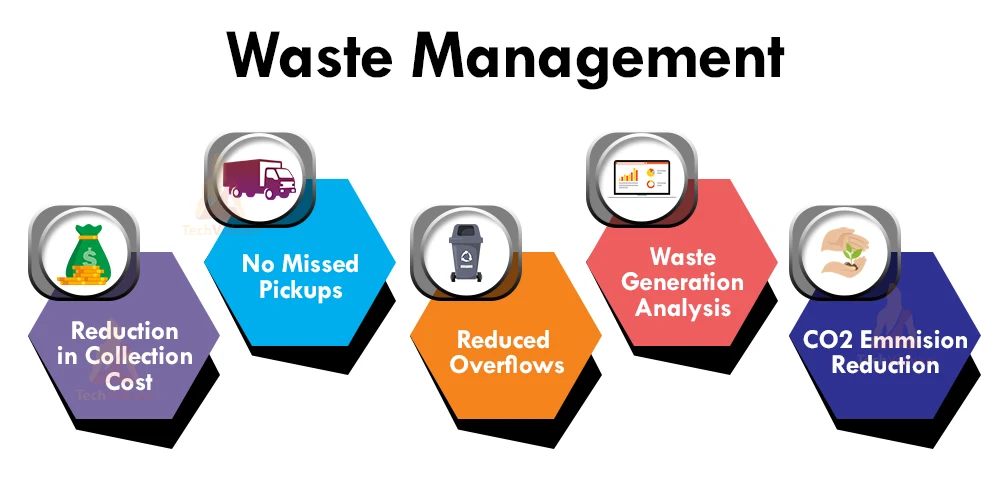Applications of IoT in Green Environment
The internet of things has thousands of uses in the environment sector ranging from simple cases such as deploying environment sensors in a meat packaging facility to using sensors to trace endangered species. Below are a few of the environment applications of IoT. Let us have a look at them one by one:
1. IoT in Extreme weather monitoring
IoT predicts natural calamities long before their occurrence in order to prepare the government and the city before the arrival. Long distance communication protocols transfer data over a long range. Weather sensors on the ground sense changes in the temperature and alert the authorities. Sensors and drones monitor the changes in the environment and record the data.
2. IoT in Vehicle Tracking
IoT is a system of interrelated devices connected via the internet that constantly collect and share information of the surrounding. This feature can help drivers find the best route to hither destination, find parking spots easily and so on. The lesser time it takes to find a parking spot means the lesser CO emissions from vehicles.
NFC and RFID technologies locate parking spots for reserved or diabled persons. Thus, IoT is offering a better solution to curb environmental pollution.
3. IoT in Waste Management
IoT in waste management or smart waste is a groundbreaking Iot application.
Smart waste aims to revamp the quality of waste collection and recycling. Methods such as route optimization help in reducing fuel consumption by garbage trucks.
Sensors on dumpsters check the fill levels. The clouds receive this data from the sensor via Gateways. The IoT platform processes this raw data into information. This way we need not worry about dumpster overflows that pollute the city further.
4. IoT in Water safety
Intelligent Water Management is an application of Iot to protect the precious water resource. It involves techniques such as leakage detection, water quality and water monitoring systems, transparency on consumption and hygienic maintenance of infrastructure that stores water in large amounts.
Water is a natural resource and generations of civilizations are responsible for its rapid depletion. IoT systems are bringing this resource back to life slowly.
5. Environmental monitoring
The internet of things is being used to manage the changes in the environment over a period of time and helps in reflecting upon these changes. The world exploits the natural resources daily and Iot offers ways to ensure that the resources do not go extinct.
Iot uses techniques such as Precision farming, Infrastructure Monitoring, Inventory Management and Air pollution Monitoring to make sure that the pollution levels are in check and everything is running smoothly.
6. Endangered species protection
Large Organizations are using Iot monitoring systems to locate endangered species. They are employing sensors and drones in parts of the world where humans have not yet reached to detect the presence of endangered plants and animals.
One such case study is the saving of Rhinoceros in South Africa by deploying IoT systems to detect the presence of Rhinoceros in deserted areas of the country.
7. IoT in Commercial Farming
IoT in Agriculture(IoTAG) is helping farmers produce crops of better quality and in maintaining better standards for cattle. IoTAG is changing the course of agricultural management. It enhances the quality and quantity of crops.
Some of the applications include automated irrigation systems, waste reductions, crop monitoring, cattle management, greenhouse automation and harvesting robotics.
8. Air and Water pollution
Older methods of controlling pollution include usage of manual labour. Iot eliminates and to an extent reduces the dependency on extra labour, constant sampling and monitoring. It stores data about polluted areas and green areas. It tracks the environmental conditions and sends data to government bodies simultaneously. IoT offers pollution monitoring solutions in smart cities to help curb climate change to a large extent.
9. IoT in Monitoring air, water and forests
IoT deploys temperature and proximity sensors to check the quality of water and air. Sensors and actuators in forests notify the forest authorities in case of a forest fire. This helps the officials take necessary steps before the onset of a manageable incident. Sensors record and collect data about endangered and rare species. Scientists use this information to study further about new plants and animals.
10. Fisheries Monitoring systems
IoT develops aquaculture systems to monitor the health and status of fishes in various water bodies. This leads to sustainable and resilient fisheries that ensure profits and in turn health aqua systems.
Need for environmental monitoring systems
The rise in the contamination of water, air and soil requires the development of a system to ensure hygiene and purity. Global climate change is a leading concern and giant industries have been manipulating the earth’s resources since time immemorial. IOT systems offer sustainable solutions with increase in profitability.
Challenges in using environment sensors
The current methodologies to deploy technology in the environment sector are expensive and difficult to maintain. IoT systems are low-cost and easy to manage. However, environment sensors vary in performance. Another challenge IoT faces in the environment sector is the manufacturers failing to perform basic testing which could lead to threats in security.
Summary
In conclusion, the internet of things is a growing technology with a wide range of applications in the environment sector. However, as we see, security and data collection are still some of the few challenges IoT systems face in the environment sector.

